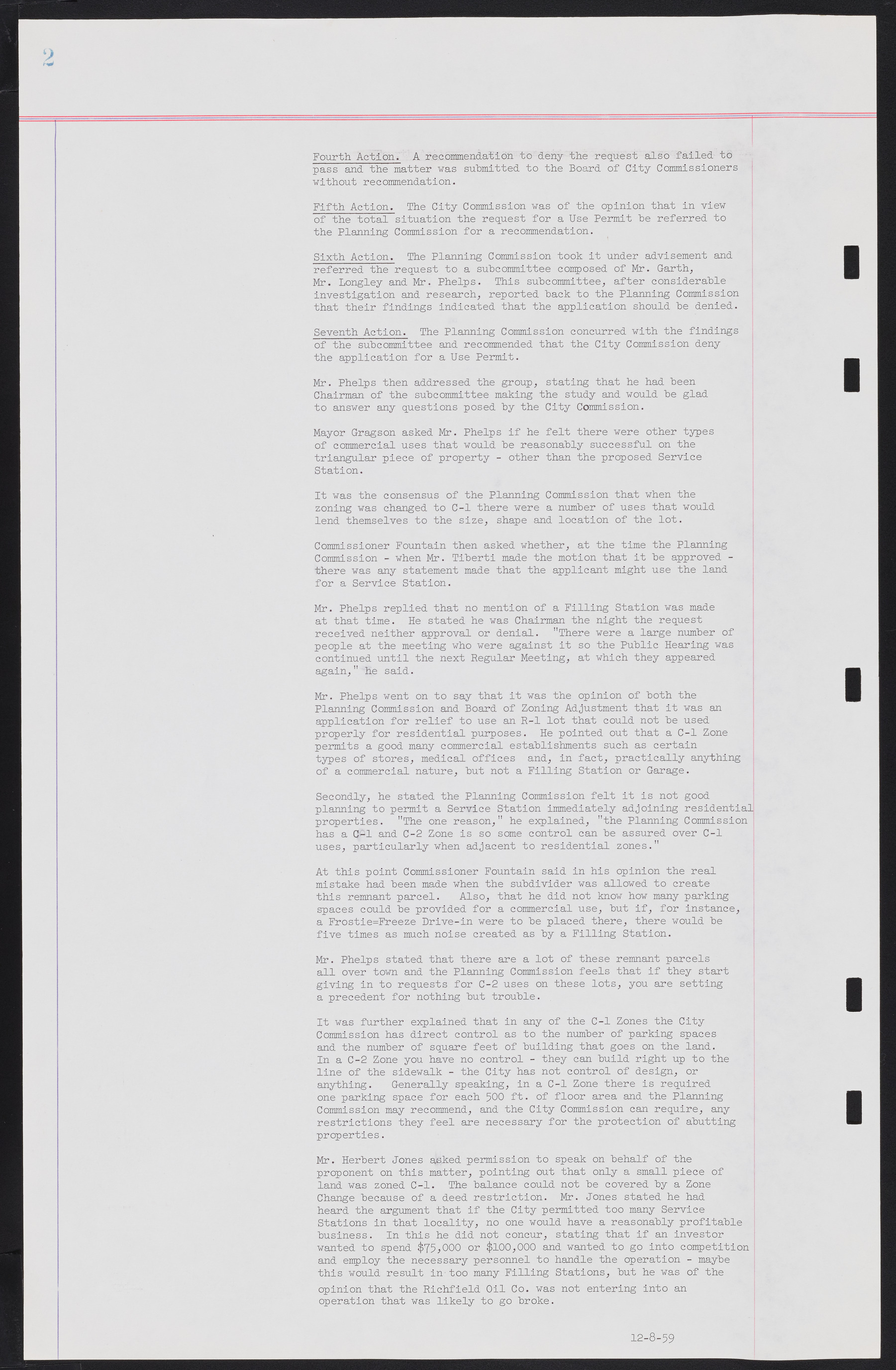Copyright & Fair-use Agreement
UNLV Special Collections provides copies of materials to facilitate private study, scholarship, or research. Material not in the public domain may be used according to fair use of copyrighted materials as defined by copyright law. Please cite us.
Please note that UNLV may not own the copyright to these materials and cannot provide permission to publish or distribute materials when UNLV is not the copyright holder. The user is solely responsible for determining the copyright status of materials and obtaining permission to use material from the copyright holder and for determining whether any permissions relating to any other rights are necessary for the intended use, and for obtaining all required permissions beyond that allowed by fair use.
Read more about our reproduction and use policy.
I agree.Information
Digital ID
Permalink
Details
More Info
Rights
Digital Provenance
Publisher
Transcription
Fourth Action. A recommendation to deny the request also failed to pass and the matter was submitted to the Board of City Commissioners without recommendation. Fifth Action. The City Commission was of the opinion that in view of the total situation the request for a Use Permit be referred to the Planning Commission for a recommendation. Sixth Action. The Planning Commission took it under advisement and referred the request to a subcommittee composed of Mr. Garth, Mr. Longley and Mr. Phelps. This subcommittee, after considerable investigation and research, reported back to the Planning Commission that their findings indicated that the application should be denied. Seventh Action. The Planning Commission concurred with the findings of the subcommittee and recommended that the City Commission deny the application for a Use Permit. Mr. Phelps then addressed the group, stating that he had been Chairman of the subcommittee making the study and would be glad to answer any questions posed by the City Commission. Mayor Gragson asked Mr. Phelps if he felt there were other types of commercial uses that would be reasonably successful on the triangular piece of property - other than the proposed Service Station. It was the consensus of the Planning Commission that when the zoning was changed to C-1 there were a number of uses that would lend themselves to the size, shape and location of the lot. Commissioner Fountain then asked whether, at the time the Planning Commission - when Mr. Tiberti made the motion that it be approved - there was any statement made that the applicant might use the land for a Service Station. Mr. Phelps replied that no mention of a Filling Station was made at that time. He stated he was Chairman the night the request received neither approval or denial. "There were a large number of people at the meeting who were against it so the Public Hearing was continued until the next Regular Meeting, at which they appeared again," he said. Mr. Phelps went on to say that it was the opinion of both the Planning Commission and Board of Zoning Adjustment that it was an application for relief to use an R-1 lot that could not be used properly for residential purposes. He pointed out that a C-1 Zone permits a good many commercial establishments such as certain types of stores, medical offices and, in fact, practically anything of a commercial nature, but not a Filling Station or Garage. Secondly, he stated the Planning Commission felt it is not good planning to permit a Service Station immediately adjoining residential properties. "The one reason," he explained, "the Planning Commission has a C-1 and C-2 Zone is so some control can be assured over C-1 uses, particularly when adjacent to residential zones." At this point Commissioner Fountain said in his opinion the real mistake had been made when the subdivider was allowed to create this remnant parcel. Also, that he did not know how many parking spaces could be provided for a commercial use, but if, for instance, a Frostie-Freeze Drive-in were to be placed there, there would be five times as much noise created as by a Filling Station. Mr. Phelps stated that there are a lot of these remnant parcels all over town and the Planning Commission feels that if they start giving in to requests for C-2 uses on these lots, you are setting a precedent for nothing but trouble. It was further explained that in any of the C-1 Zones the City Commission has direct control as to the number of parking spaces and the number of square feet of building that goes on the land. In a C-2 Zone you have no control - they can build right up to the line of the sidewalk - the City has not control of design, or anything. Generally speaking, in a C-1 Zone there is required one parking space for each 500 ft. of floor area and the Planning Commission may recommend, and the City Commission can require, any restrictions they feel are necessary for the protection of abutting properties. Mr. Herbert Jones asked permission to speak on behalf of the proponent on this matter, pointing out that only a small piece of land was zoned C-1. The balance could not be covered by a Zone Change because of a deed restriction. Mr. Jones stated he had heard the argument that if the City permitted too many Service Stations in that locality, no one would have a reasonably profitable business. In this he did not concur, stating that if an investor wanted to spend $75,000 or $100,000 and wanted to go into competition and employ the necessary personnel to handle the operation - maybe this would result in too many Filling Stations, but he was of the opinion that the Richfield Oil Co. was not entering into an operation that was likely to go broke. 12-8-59

